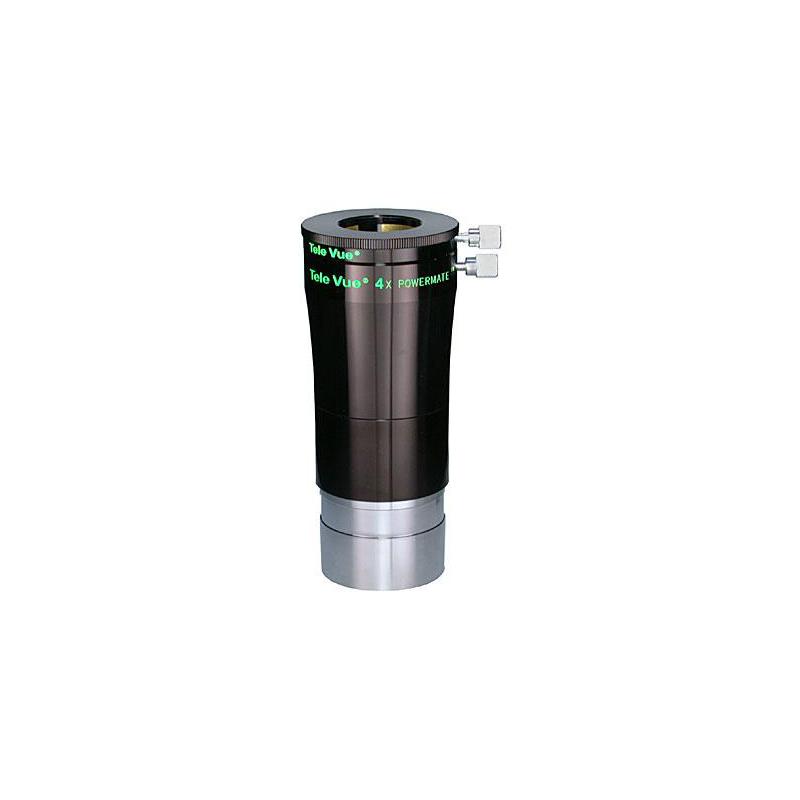Originating from its inventor, Peter Barlow, the Barlow lens is often capitalised due to its eponymous nature. A common optical component, this device slots between the telescope’s eyepiece and either its objective lens or primary mirror. In a standard setup, the eyepiece comfortably fits atop the Barlow lens, which then inserts into the diagonal or focuser – the regular resting place for the eyepiece.
The chief aim of integrating a Barlow lens within the telescope’s optical pathway is to increase the magnification offered by any eyepiece, or to increase the telescope’s focal length for photographing the planets. By owning just a single Barlow lens, you effectively expand the potential magnification options available in your collection of eyepieces. This not only offers cost savings but also simplifies your magnification choices.
How does a Barlow Lens Work?
Although most discussions usually link the Barlow lens directly to the eyepiece, a more accurate association is with your entire telescope’s optical path. Essentially, a Barlow lens acts as a divergent lens, altering the angle of incoming light rays to be more steep, moving the point where they converge at the focal plane outward, and, in turn, effectively lengthening the telescope’s focal length. For instance, with a 2x Barlow lens in a telescope boasting a 400 mm focal length, it behaves as if it’s part of an 800 mm focal length telescope. This unique feature allows every eyepiece to provide dual magnifications – one with the Barlow and one without.
For simplicity, many discuss Barlow lenses in relation to eyepieces. Common wisdom suggests that a 2x Barlow turns a 10 mm eyepiece into one that magnifies similarly to a 5 mm eyepiece. Whilst this understanding isn’t incorrect, it’s also worthwhile to grasp the underlying optical principles, especially for those keen on the science of optics.
Standard Barlow lenses suitable for visual observation usually offer magnifications ranging from 1.5x to 3x. However, those exceeding 3x are primarily designed for planetary astrophotography, although they are still technically compatible with regular eyepieces.
Barlow lenses come with diverse design configurations. In a conventional model, one inserts the eyepiece into the Barlow lens, and then places the entire assembly into the diagonal or focuser. However, many Barlow designs enable the lens housing assembly to be screwed directly onto the eyepiece, often termed ‘Barlow elements’. You can either attach the eyepiece to the Barlow unit or directly affix the lens housing to the eyepiece or to the bottom of your camera/adapter. This often results in varied magnification levels – the full assembly might provide 2x magnification, whereas the element alone may yield 1.5x. This is caused by the fact that when the lens is closer to the focal plane the rays cannot diverge as much, leading to a weaker amplification effect. Telecentric Barlows and “focal extenders” do not exhibit this feature, offering a fixed amplification no matter where they are placed in relation to the eyepiece or camera.
Commonly, Barlows come labelled with magnification indicators like 2x If an eyepiece yields a 100x magnification, coupling it with a 2x Barlow would enhance it to approximately 200x.
The lens composition of Barlow lenses can be varied, ranging from a single lens element to designs that incorporate up to four or five lens elements. Higher-end models integrate exotic ED glass types to reduce chromatic aberration and other optical defects.
Similar to eyepieces, the lens elements of Barlow lenses can have edge blackening, and various coating grades with “fully multi-coated” ranking as the top tier. These coatings and blackening techniques are engineered to reduce light loss and internal reflections.
In a broad overview, the dual-element Barlow lens has emerged as the popular choice in the industry. It’s advisable to steer clear from Barlows with just a single lens element, often bundled with cheaper telescope models. While they might serve their purpose, they’re known to create optical aberrations and ruin the view.
For optimum results, a Barlow lens should integrate seamlessly, without introducing any optical distortions or diminishing the field of view. The view output from a 10 mm eyepiece combined with a 2x Barlow should be almost identical to that from a 5 mm eyepiece of the same design. If this isn’t the case, it’s an indicator of the Barlow lens’ inferior quality or design flaws.
How to Use a Barlow Lens
Begin by inserting the Barlow lens into the focuser or the diagonal of your telescope. For those new to the world of telescopes, the focuser is the mechanism that adjusts the telescope’s focus, and the diagonal is a secondary mirror or prism that deflects the light path by 90 degrees, commonly found in refractors and Cassegrain telescopes. Once the Barlow is securely in place, introduce the eyepiece into the Barlow lens. This eyepiece is what you will look through.
For users of refractors, Schmidt-Cassegrains, and Maksutov-Cassegrain telescopes that traditionally incorporate a diagonal in the optical path, there exists an alternative setup. Here, the Barlow lens is inserted directly into the focuser or visual back. Subsequently, the diagonal can be placed within the Barlow lens. As always, the eyepiece is then placed into the diagonal, allowing you to observe as usual. This configuration may alter the magnification factor depicted on the Barlow lens, however, and may not be able to reach focus at all depending on how much additional travel your focuser can provide.
Advantages & Disadvantages of Barlow Lenses
- Enhanced Eye Relief: One of the standout benefits of using a Barlow lens is the ability to maximise eye relief. Eye relief denotes the optimal distance your eye needs to be from the eyepiece’s top lens to capture the entire field of view. Longer focal length eyepieces, which inherently possess lower power, often grant longer eye relief. This is pivotal for ensuring a comfortable viewing experience.
- Economical: Instead of purchasing multiple eyepieces for varied magnifications, a single Barlow lens can multiply the effective magnifications of eyepieces you already possess.
- Potential Image Quality Loss: Introducing an additional optical component into the light path might lead to significant loss of sharpness or contrast if the Barlow isn’t of high quality.
- Focus shift: Barlow lenses that don’t properly seat in your focuser or diagonal body due to their length or other constraints can move the focal plane of the telescope so far that it is no longer possible to focus the image at the eyepiece.
- Weight: A 2” Barlow lens in particular is likely to throw off the balance of many telescope setups, and a Barlow inevitably leads to more strain on your focuser as the eyepiece is further from the focuser body, exerting more torque in addition to the eyepiece itself. This can cause cheaper focusers to sag or rack themselves in on their own.
Best Barlow Lens For 1.25″ Focuser – My Recommendations
Most shoppers are likely to only want a 1.25” Barlow lens. For imaging it’s all you need, and most shorter focal length oculars that you’d want to Barlow are 1.25” anyway. A 1.25” Barlow is also cheaper and much lighter in weight than a 2” unit.
Under £20
NEEWER 2X Barlow Lens
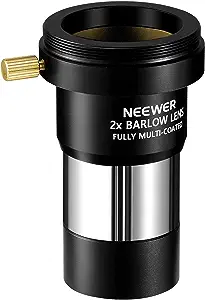
£20 – £50 Range
Choice 1 : Antares 2x Barlow Lens
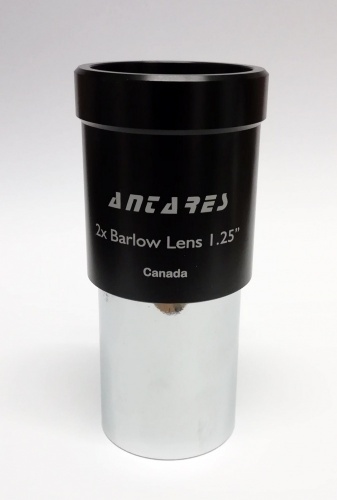
Choice 2 : Levenhuk (GSO) 2.5x Barlow Lens
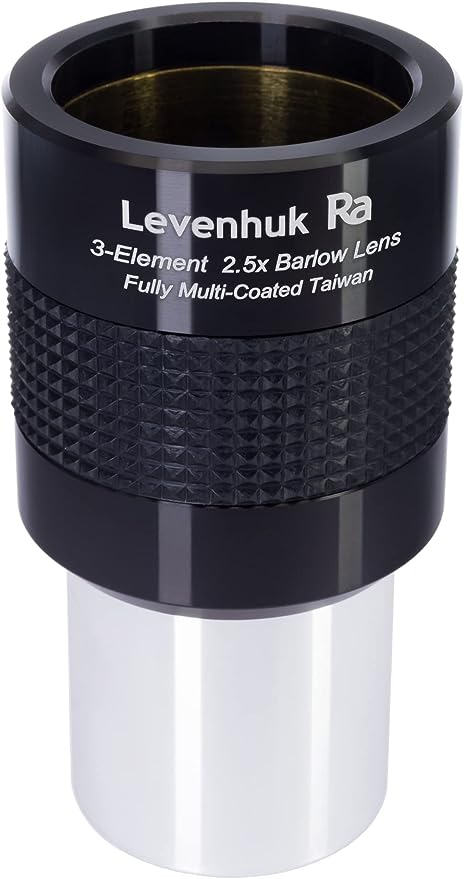
£50-£100 Range
Celestron X-Cel LX Barlow
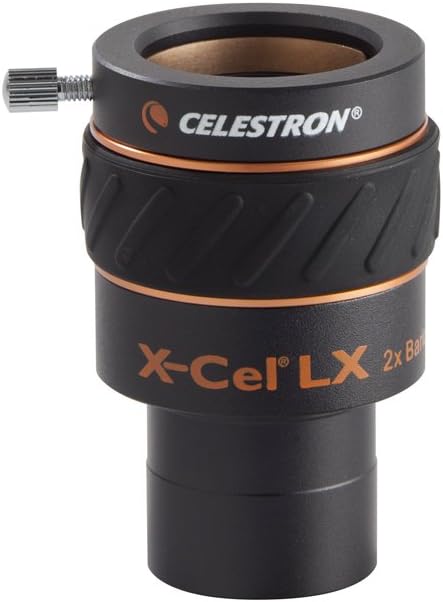
£100-£125 Range
Explore Scientific 1.25” Focal Extender
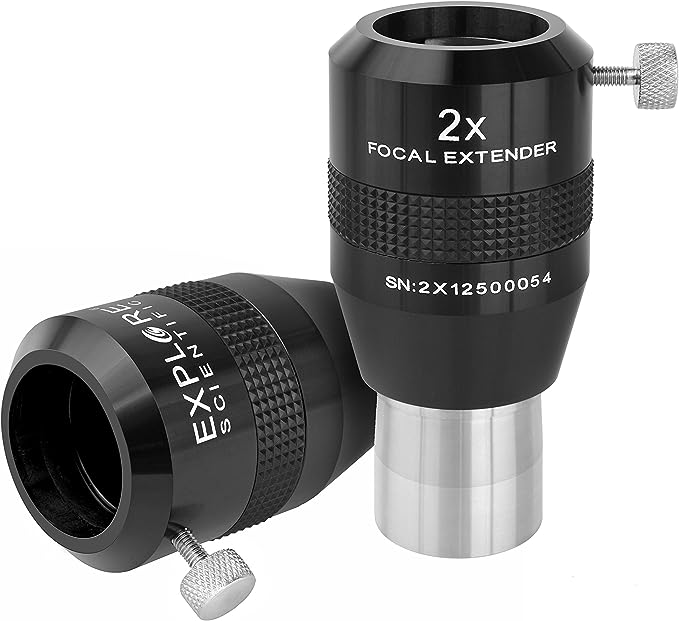
£120-£150 Range
Tele-Vue 1.25” Barlow
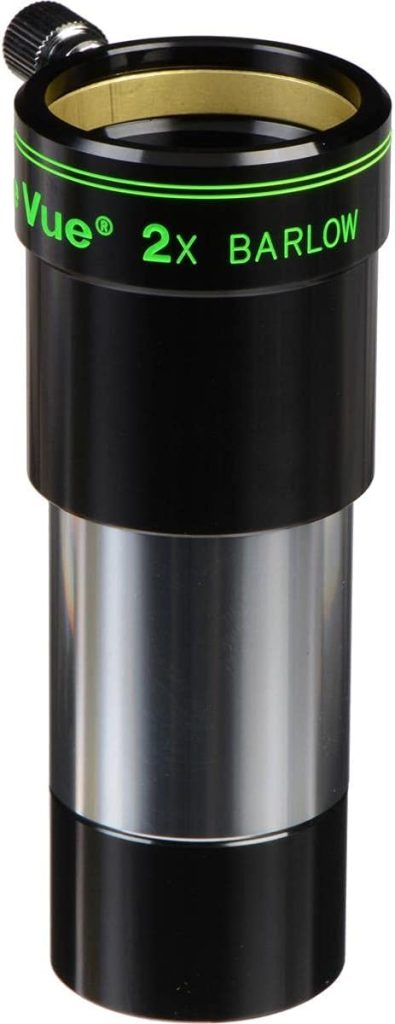
£150+ Range
Tele-Vue 1.25” Powermate
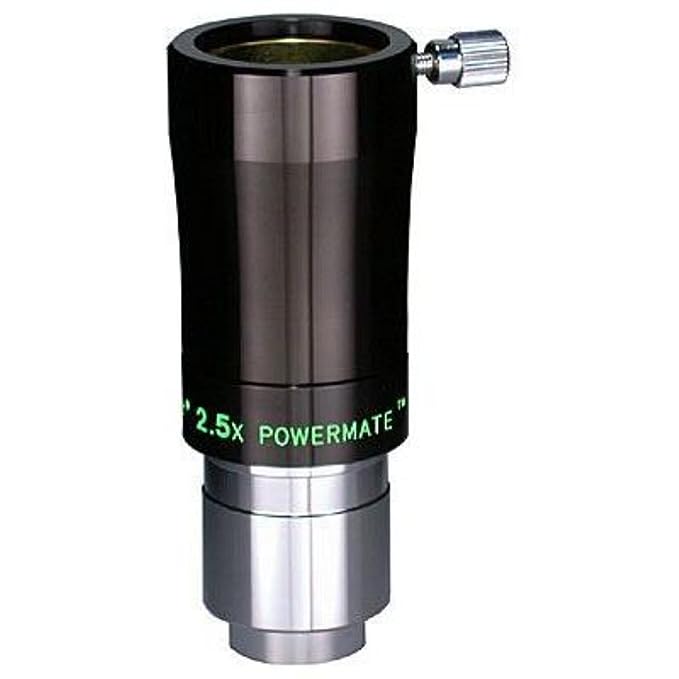
Honorable Mention
Takahashi 2x Barlow Lens
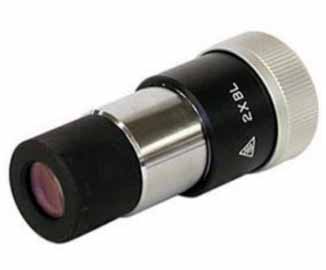
Our Top 2” Barlow Lenses
Combining a 2” Barlow lens with a 2” eyepiece can add significant weight to the telescope setup. This combination might introduce balance issues, which can affect the stability and orientation of your telescope. Always ensure that your telescope can comfortably support the combined weight of the Barlow lens and the eyepiece to avoid any mishaps.
A 2” Barlow is unnecessary for most users, as a Barlow generally is only needed to extend magnifications to higher than your eyepieces allow, where you are likely to be using 1.25” eyepieces towards the higher-power end anyway. Likewise, for planetary imaging, any suitable camera sensor does not need a 2” Barlow.
Under £70
StellaLyra ED Deluxe 2x 2″ Barlow Lens
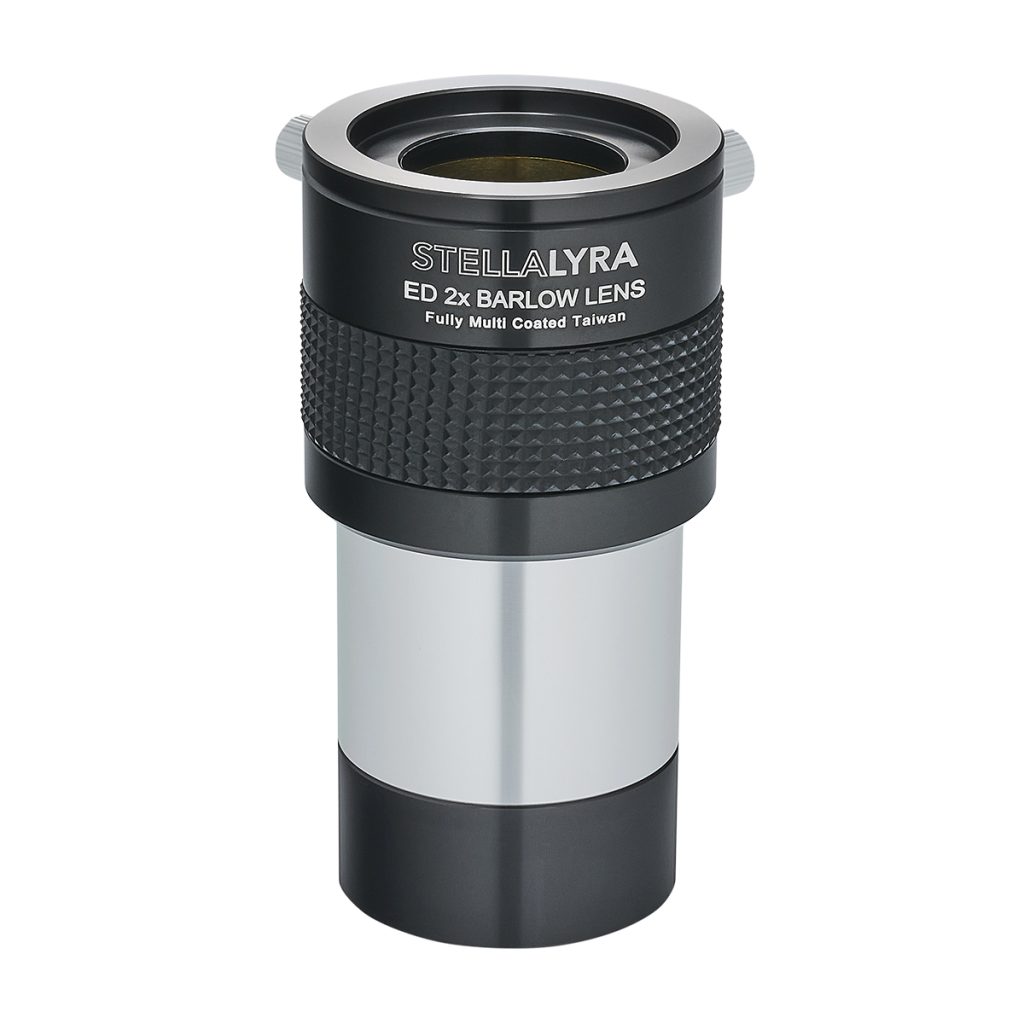
Under £70-£100
Antares 2″ 1.6x Barlow Lens With Twist Lock
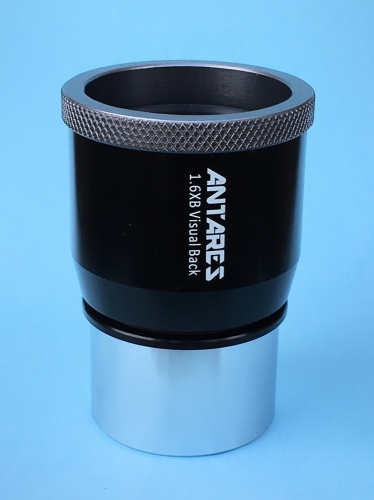
Under £100-£175
Celestron Luminos 2.5x 2″ Barlow
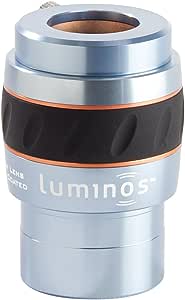
Under £175-£225
Explore Scientific 2” Focal Extender
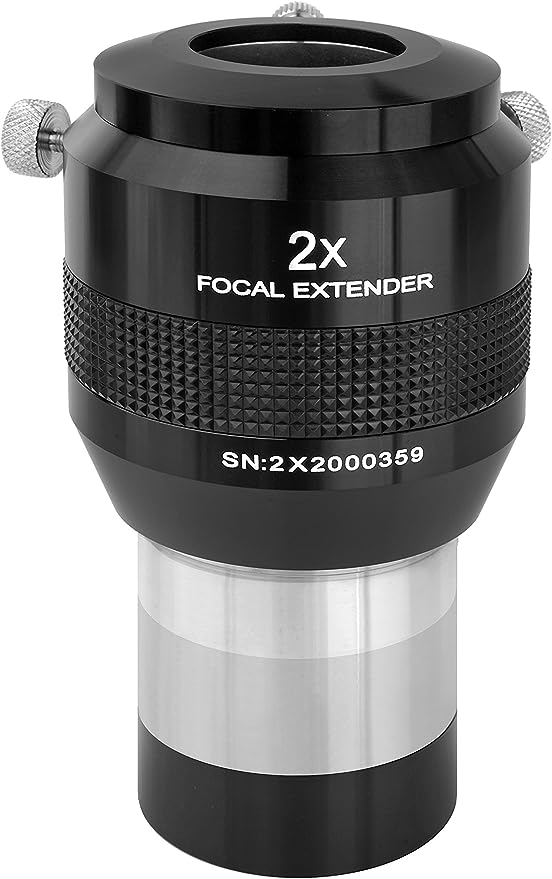
Under £225+
Tele-Vue 2” Powermate
